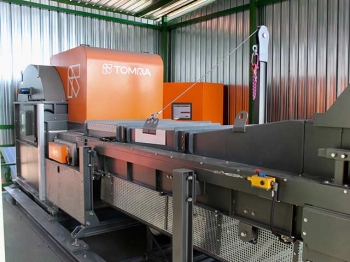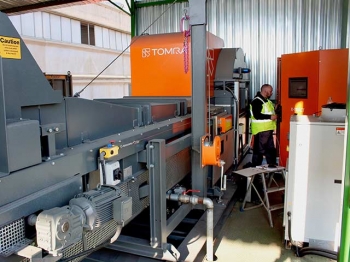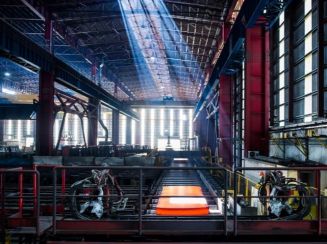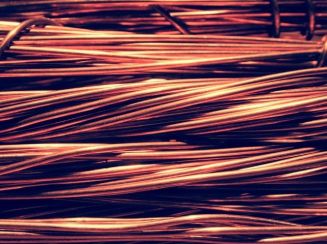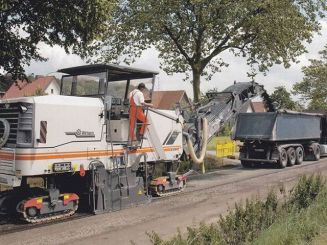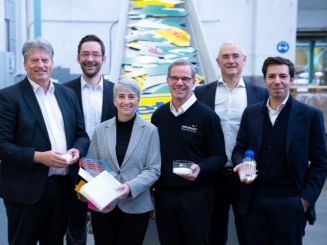
The showcase of Centro Rottami
Aluminum recycling is particularly important for the Italian economy, which has historically been lacking in raw materials
Aluminum recycling is particularly important for the Italian economy, which has historically been lacking in raw materials. In fact, as much as 90% of the aluminum produced in the country comes from recycling, and is identical to the product obtained from the original ore.
Thus, in line with current practice elsewhere in the world, it is no coincidence that Italy has installed a great number of TOMRA´s X-ray Transmission X-TRACT units which facilitate the sorting and processing of aluminum for recycling.
The Centro Rottami Srl of Cisterna di Latina is a leading Italian recycling center, and so it was natural for this Lazio company to put their trust in TOMRA Sorting Recycling’s cutting-edge technology. Launched in 1985 to meet the needs of the ferrous and non-ferrous metal (aluminum) recovery sector, Centro Rottami then relocated to an 80,000-square-meter plot in the industrial area of Cisterna di Latina in 1994. Each month, Centro Rottami processes about 300-500 tons of aluminum, 4,000 tons of scrap metal, 300 tons of non-ferrous scrap metal, 2,000 tons of tires and 200 tons of lead batteries.
Owned by the Del Prete family, this dynamic and innovative company operates at the cutting edge of the market and is fully conversant with emerging trends. Commenting on the company’s business aspirations, Gennaro Del Prete says: “We strongly believe in the circular economy. Therefore, our main goal is to implement the total recovery of all waste materials entering our establishment.”
This “zero waste” goal is entirely in sympathy with the latest green strategies, and Del Prete explains what this means in terms of the processing cycle: “Aluminum sorting of the incoming waste stream occurs in the final phase of a complex treatment process which we have designed and implemented using some of our own patented machines, together with two TOMRA units, in order to reduce lost materials to the absolute minimum.”
More specifically, this procedure uses a TOMRA FINDER, purchased in 2008, and a latest generation X-TRACT, purchased in 2016 and recently put into operation. Engineer Davide Cattaneo of Orion, TOMRA Sorting’s Italian agent, explains: “At Centro Rottami, the material is processed in batches and uses a sequence of alternating passes to recover three different-sized fractions: 5-30 mm, 30-80 mm and >80 mm. The recently installed X-TRACT unit has allowed for a better separation of the processed material, which has consequently increased the value of the product. The decision to install one of TOMRA´s X-TRACT machines is tied to the need to optimize the quality of recovered aluminum from the shredding process with a view to the possibility of exploiting possible synergies with the aluminum smelter located nearby.” The X-ray transmission technology (XRT) enables the recognition and separation of materials based on their atomic density, and can classify and recover materials to a high level of purity, irrespective of their size, or the degree of moisture or surface pollution present.
Centro Rottami director Leopoldo Del Prete explains: “TOMRA is a company you can trust, and its Italian partner has always proved a very professional partner right from the very first pre-purchase consultation. That’s why we decided to approach them again when the time came to purchase the second X-TRACT unit for metal processing. Over many years, TOMRA´s FINDER has never given us any problems – and that’s a great calling card to be able to offer!”
TOMRA’s X-TRACT allows Centro Rottami to obtain a better quality of aluminum fraction by increasing its purity and therefore its selling price. At the moment, the self-contained unit is detached from the rest of the installation, and functions as a batch processor (as the FINDER also does). Cattaneo explains in a little more detail: “For the nearby smelter, using a cleaner form of aluminum leads to indirect benefits during the smelting phase; one of the gains is the reduction in downtime required for cleaning the furnace, which also saves on the expenditure of energy required to bring the furnace back up to operating temperature. So, less machine downtime and less energy consumption means increased profitability.”
Leopoldo Del Prete has described his “zero waste” production process in some detail, from receiving the incoming waste material to the production and final output of the recycled raw material. The main processing begins with a shredding installation (a Lindemann Mill unit), from which three types of products are obtained: aluminum and mixed shredded metals, shredded scrap metal (proler) and fluff. The aluminum and mixed shredded metals are sent to the X-TRACT for aluminum cleaning. However, the management of fluff – chopped-up components made of plastic, glass, sponge, fabric, tires, cables, etc., materials which would normally be sent to landfill – is particularly interesting. At Centro Rottami, this material undergoes very thorough processing, using technology developed by the center itself, which enables the recovery of the minimal fractions remaining in the fluff together with the production of an inert secondary raw material used to produce a high-quality bituminous conglomerate which will later be reused in the building sector.
As a first step, the fluff is subjected to a hydrodynamic sorting treatment (patented by Centro Rottami), which leads on to the separation of three types of material: fine fluff, mixed metals and mixed plastics. The mixed metals are sent to the X-TRACT to complete a refining process (because these mixed metals avoided the magnetic separation and eddy currents placed downstream from the shredding treatment), and afterwards are immediately sent on for recovery. The organic portion, which consists of plastic and fine fluff and represents around 40-45% (by weight) of the fluff obtained from the shredder, continues on through the refining process where it undergoes a devolatilization treatment. The fluff mixture is first fed into a drier, and then into a furnace with a separate air inlet, where it pyrolyzes (decomposes) at around 450°. This process leads to the volatilization (vaporization) of the organic compounds and produces a gas which can be used as an energy source.
The product emerging from the furnace is thus divided into two fractions: the >5 mm material is sent to the FINDER, which recovers the metal fractions, and the <5 mm material is turned into a new secondary raw material which is then called GRANIMIX®, a branded product registered by Centro Rottami.
In the current climate, when everyone’s attention is focused on recycling – which is often more a matter of words than deeds – Centro Rottami constitutes an authentic center of excellence in which TOMRA’s industry-leading technology and service takes its rightful place.







